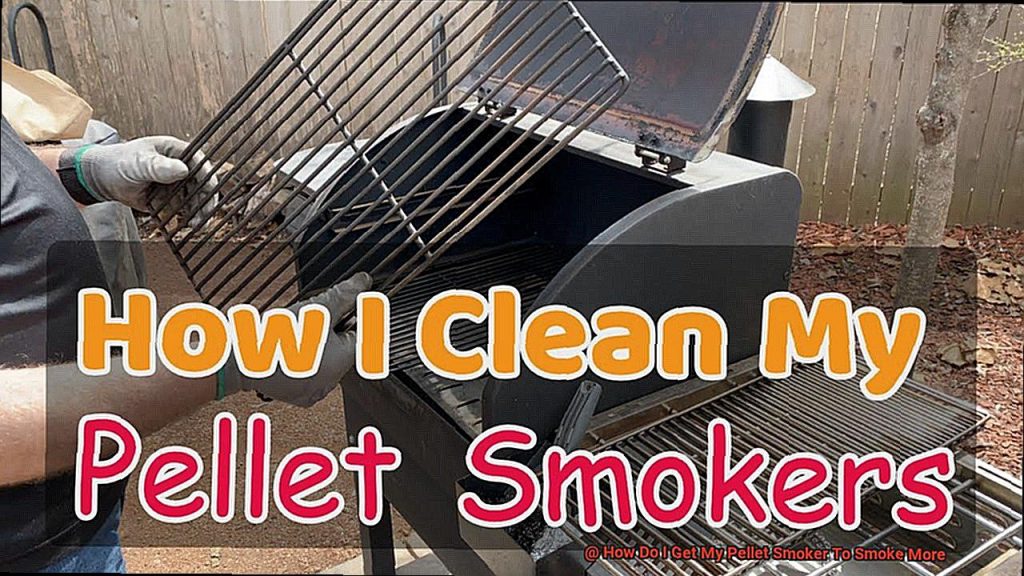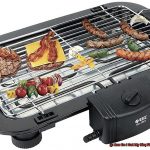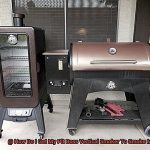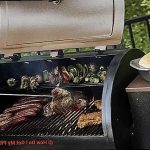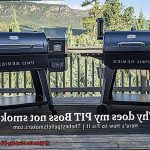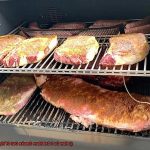Picture this: the tantalizing scent of perfectly smoked meats wafting through the air, making your mouth water with anticipation. But what if your pellet smoker just isn’t cutting it? Don’t worry, we’ve got you covered.
If you’re struggling to get your pellet smoker to produce that delicious, smoky flavor you crave, then look no further. In this blog post, we’ll dive into the top methods for getting your smoker to smoke more and achieve that perfect taste.
From adjusting the temperature and choosing the right pellets to adding flavorful wood chips and utilizing accessories, we’ll cover all the tips and tricks you need to know to become a smoking pro. Whether you’re a seasoned pitmaster or new to the game, this article has something for everyone.
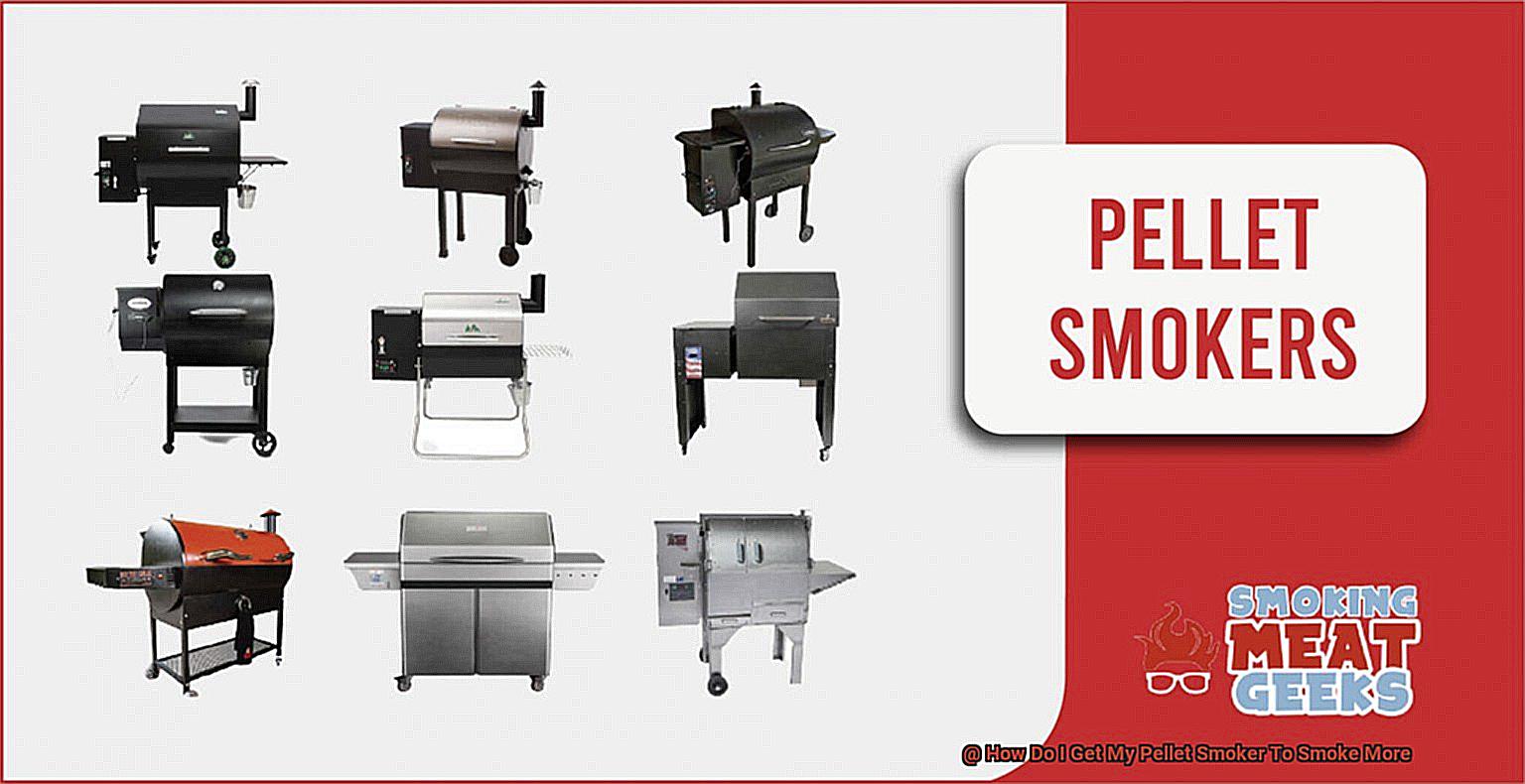
So why settle for mediocre results when you can learn how to smoke like a pro? Get ready to transform your pellet smoker into a smoky powerhouse and elevate your BBQ game to new heights. It’s time to take control of your smoking experience and create mouthwatering masterpieces every time.
Contents
What Are Pellet Smokers?
If you’re a fan of smoky, flavorful meats and veggies, you might want to consider investing in a pellet smoker. These outdoor cooking devices, also known as pellet grills, are becoming increasingly popular among backyard grillers and professional pitmasters alike due to their convenience and versatility.
So, what exactly are pellet smokers? They work by feeding wood pellets into a hopper, which then transports them to a heating element inside the smoker. The heating element ignites the pellets, creating smoke and heat that cooks the food. Pellet smokers offer precise temperature control, allowing users to set the desired temperature on a digital controller and let the smoker do the rest.
One of the biggest benefits of pellet smokers is their versatility. They can be used for smoking, grilling, roasting, and even baking. Additionally, there’s a wide variety of sizes available to accommodate different cooking needs – from small portable models to large commercial-grade units.
But how can you make sure your food is as smoky as possible? Choosing hardwood pellets such as hickory or mesquite instead of fruitwood pellets like apple or cherry can increase smoke production. Adjusting the temperature of the smoker can also allow the pellets to smolder longer for more smoke flavor. Adding wood chips or chunks can also add extra smoke flavor to your food.
Choosing the Right Type of Pellets
Get ready to take your smoking game to the next level. When it comes to achieving that mouth-watering, smoky flavor you crave, choosing the right type of pellets for your pellet smoker is crucial. With so many options on the market, it can be overwhelming to decide which ones to use. Here are some key factors to consider when selecting the perfect pellets for your next BBQ.
First and foremost, consider the type of wood used in the pellets. Different woods will produce a range of unique flavors, so it’s important to choose one that complements the meat you’re smoking. Are you smoking beef? Hickory pellets give a bold flavor that pairs perfectly with beef. Looking for something more subtle for poultry? Applewood pellets offer a delicious and delicate taste that won’t overpower your dish.
Quality is another essential factor to consider when selecting pellets. Look for pellets that are uniform in size and shape with minimal dust or debris. High-quality pellets will burn more efficiently, producing more smoke and giving you a better overall smoking experience. Don’t settle for subpar pellets that could ruin your dish.
Burn time is also a key consideration. If you’re planning on smoking meat for an extended period of time, look for pellets with longer burn times so you don’t have to constantly refill the hopper. Trust me, constantly refilling the hopper can be a real buzzkill during a long day of smoking. Pellets with shorter burn times may be suitable for shorter smoking sessions.
Adjusting the Temperature of the Smoker
Well, adjusting the temperature of your smoker is a crucial step in getting there. As an expert in this field, I have compiled some research notes on how to adjust the temperature of your smoker to increase smoke production and elevate your smoking game.
To begin with, it’s essential to understand that the temperature setting on your pellet smoker has a direct impact on the amount of smoke produced. If you want your pellet smoker to smoke more, you need to lower the temperature setting. The following methods can help you achieve this:
Opening the damper or vent is one of the best ways to lower the temperature of your smoker. The damper controls the airflow and helps regulate the temperature inside the smoker. By opening it, you allow more air to flow through the smoker, which results in lower temperatures and more smoke production. However, be cautious not to open it too much, as this can cause your smoker’s temperature to drop too low and affect cooking times.
Using a water pan or drip pan is another way to adjust the temperature of your smoker. These pans are placed inside the smoker and filled with water or other liquids such as apple juice or beer. The liquid helps regulate the temperature by absorbing heat and producing steam, which cools down the smoker’s interior. Additionally, adding moisture to the air can enhance smoke production and flavor.
Adjusting the type of wood pellets used when smoking can also help control temperature and smoke output. Harder woods like oak or hickory burn slower and produce more smoke than softer woods like fruitwoods or alder. Therefore, using harder woods can help increase smoke production while also lowering the temperature.
Adding Wood Chips or Chunks
Look no further than adding wood chips or chunks. As a smoking expert, I’ve compiled some research notes and tips on how to effectively add wood chips or chunks to your pellet smoker.
First and foremost, not all woods are created equal when it comes to smoking. The type of wood you choose can greatly impact the flavor of your food. For example, hickory and mesquite produce a stronger and more distinct smoke flavor, while fruitwoods like apple and cherry produce a milder flavor. Experiment with different types of wood to find the perfect balance for your preferences.
When adding wood chips or chunks to your pellet smoker, start by preheating your smoker to the desired temperature. Soak your wood chips or chunks in water for at least 30 minutes before placing them in a smoker box or directly on the grill grates near the heat source. This will prevent them from burning too quickly and producing bitter smoke.
It’s important to monitor the smoke output and adjust as needed. Too much smoke can overpower the flavor of your food, while too little smoke may not give you the desired flavor. Consider using a smoke tube to get even more smoke from your pellet smoker. These devices come in various shapes and sizes, so be sure to choose one that is appropriate for the size of your smoker.
Another tip is to keep your pellet smoker clean to prevent any buildup that could affect the smoke output. A clean smoker will produce better and more consistent smoke flavor in every dish you cook.
Keeping the Smoker Clean and Well-Maintained
For those who are passionate about creating perfectly smoked meats, keeping your pellet smoker clean and well-maintained is crucial. Not only does a dirty smoker affect the flavor of your food, but it can also shorten the lifespan of your smoker. So, let’s explore some simple tips for keeping your smoker in top-notch condition.
First and foremost, make sure to empty the ashtray after each use. The accumulation of ash can block air vents, leading to less smoke passing through and less flavorful food. Additionally, a build-up of ash can be a fire hazard, so it is important to clean it out every time.
Periodically giving your smoker a thorough cleaning is also essential. This involves removing all internal parts and cleaning them with warm soapy water. Make sure to rinse them well and let them dry completely before putting them back into the smoker. Don’t forget to wipe down the exterior of your smoker with a damp cloth as well. A clean smoker will not only look better but also function better, producing more smoke when it’s time to cook.
Checking and changing your pellets is another crucial aspect of maintaining your pellet smoker. Old or low-quality pellets can negatively affect the amount of smoke produced by your smoker. Therefore, ensure that you use high-quality pellets stored in a dry place to ensure they burn efficiently.
Finally, always cover your smoker when not in use. This simple step protects it from the elements and prevents debris from getting inside. A well-covered smoker will function better and produce more smoke when it’s time to cook.
Benefits of Increasing Smoke Production
Look no further than increasing smoke production for a myriad of benefits that will have you wondering why you didn’t start sooner.
First off, let’s talk taste. By increasing the smoke production in your pellet smoker, you’re infusing your meat with a rich, smoky flavor that’s hard to beat. Brisket, ribs, pork shoulder – no matter the cut, long smoking times ensure that your meat bursts with flavor that will leave your taste buds singing.
But it’s not just about taste – appearance matters too. Smoking your meat for extended periods of time can give it a beautiful golden-brown color that is sure to impress. Thanks to the Maillard reaction, amino acids and sugars combine under high heat to create a complex flavor and color profile that’s simply stunning.
And did you know that increasing smoke production can also help preserve your food? Smoke has natural antimicrobial properties that inhibit harmful bacteria growth and extend the shelf life of your meat. Whether you’re storing food for an extended period or taking it on a camping trip, you can rest easy knowing your food is safe to eat.
But perhaps the best part of increasing smoke production is how fun and rewarding it can be. Experimenting with different wood pellets and smoking techniques can create unique flavor profiles that will have your friends and family begging for more. And there’s nothing quite like bonding over delicious food cooked on your pellet smoker.
In summary, benefits of increasing smoke production include:
- Enhanced flavor
- Beautiful golden-brown color
- Preservation of food
- Fun experimentation and bonding over delicious food
Potential Challenges with Increasing Smoke Production
While it may seem like a simple task, there are some potential challenges you should be aware of before you fire up your smoker. Here are four key factors to consider:
- Pellet Choice: Different types of pellets will produce varying levels of smoke, with some producing more than others. For example, mesquite and hickory pellets tend to produce more smoke than fruitwood pellets. To achieve your desired level of smoke, make sure to choose the right pellets for the job.
- Temperature Control: Temperature is critical when it comes to smoke production. If your smoker isn’t hot enough, you won’t get enough smoke infusion. However, if it’s too hot, the smoke may burn off before it has a chance to penetrate the food. Finding that perfect temperature sweet spot may take some experimentation based on your specific smoker and the type of food you’re cooking.
- Food Size and Shape: The size and shape of your food can also affect smoke production. Larger cuts of meat or whole poultry will naturally take longer to cook and have more time to absorb smoke. In contrast, smaller pieces may cook too quickly, resulting in less time for smoke infusion.
- Creosote Buildup: Increasing smoke production can lead to creosote buildup in your smoker. This occurs when too much smoke is produced, and not enough airflow is present to disperse it. Creosote buildup can result in a bitter taste in your food and potentially damage your smoker if left unchecked.
XoBT8C1UKtQ” >
Conclusion
In conclusion, achieving the perfect smoky taste from your pellet smoker is within reach with a few simple adjustments. By varying the temperature, selecting the right pellets, adding flavorful wood chips or chunks, and using accessories, you can transform your pellet smoker into a smoky powerhouse and take your BBQ game to new heights.
Selecting high-quality pellets that match your preferred wood flavor is vital for creating that mouth-watering smoky taste. Be sure to consider factors such as burn time, quality, and type of wood when choosing the perfect pellets for your next cookout.
Adjusting the temperature of your smoker is also crucial in increasing smoke production. Opening the damper or vent, using a water pan or drip pan, and experimenting with different types of wood pellets are just some methods that can help you achieve this.
Enhancing smoke production and flavor can be achieved by adding wood chips or chunks. Experiment with different types of wood to find the perfect balance for your preferences.
Keeping your pellet smoker clean and well-maintained is essential for optimal functioning and increased smoke production during cooking.
Unlocking more smoke production has many benefits such as enhanced flavor, beautiful golden-brown coloration, preservation of food quality, fun experimentation opportunities, and bonding over delicious food. However, it’s important to be aware of potential challenges such as choosing suitable pellets, controlling temperature fluctuations effectively, managing food size and shape on grates effectively while avoiding creosote buildup.

